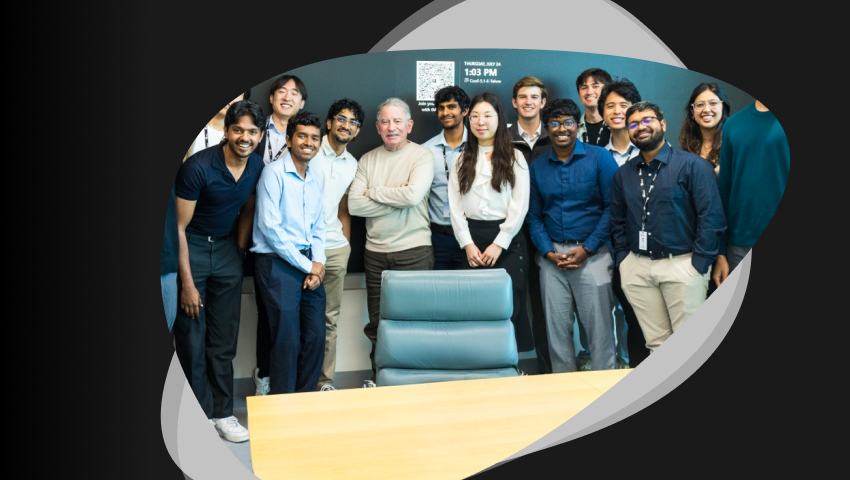By streamlining contract analysis, C3 Generative AI reduces risk, improves consistency, and accelerates deal execution.
By Drew Patel, AI Solutions Manager, C3 AI and Mindy Lin, Senior Data Scientist, C3 AI
Revolutionizing Legal Contract Analysis with C3 Generative AI
Legal contracts are the backbone of the modern business world, governing transactions, partnerships, and regulatory compliance. However, managing complex deal structures and high contract volumes create significant challenges in efficiently managing and reviewing agreements. Contract analysis is essential. This process is time-consuming due to the heavy reliance on manual review processes, leading to bottlenecks for organizations without an efficient system in place.
Why Contract Analysis Remains a Challenge
Legal teams face significant hurdles in analyzing contracts efficiently. These challenges include:
- Time-consuming Process: Reviewing legal contracts can take days depending on the contract type. The complexity of these documents combined with the extensive training required for professionals slows down the process.
- Human Error Prone: The intricate nature of legal contracts with their dense legal terminology and nuanced clauses increases the risk of human error during analysis. Even experienced professionals may overlook critical details or misinterpret clauses, especially when reviewing large volumes of contracts under tight deadlines.
- Inconsistent Analysis: Contract reviews often rely on individual attorney workflows which leads to variations in how contracts are analyzed. This lack of standardization results in inconsistencies across legal teams making it challenging to ensure repeatable and reliable contract evaluations.

Figure 1: C3 Generative AI Accelerates Contract Analysis
C3 Generative AI, specifically designed for Legal Contract Analysis, transforms the contract review process. By automating complex analysis tasks, it streamlines the review process, and significantly reduces the time and effort required for manual review. C3 Generative AI empowers legal teams to optimize and scale their workflows, handling high volumes of contracts with greater speed and accuracy. This accelerates the review process while also ensuring analysis consistency, reducing human error, and allowing attorneys to focus on higher-value legal work.
Smarter, Faster Contract Review with C3 Generative AI
Contract analysis is transformed by C3 Generative AI by automating key workflows to ensure attorneys can efficiently review contracts while maintaining consistency and traceability.
The application begins by identifying the critical analysis term required for a comprehensive contract review. These terms are then codified into a Generative AI-driven pipeline to form the analysis foundation.

Figure 2: C3 Generative AI analysis review page surfaces generated insights for attorney review
The AI-powered workflow enables attorneys to execute the contract analysis through a user-friendly application UI. Attorneys can review and refine generated insights and verify the results with full source traceability. The finalized analysis can then be exported for clients to kick-off the contract negotiation process.
Advantages that Drive Impact
- Reduced Analysis Time
- AI significantly accelerates contract analysis generating a first draft review in minutes.
- Consistent Analysis
- Gen AI workflows minimize variability in contract reviews, ensuring a uniform evaluation process. Standardized document review procedures ensure scalability and paves the way for further automation opportunities.
- Reduced Human Errors
- Application minimizes common human errors through a consistent AI analysis with a specialized interface for attorney oversight to ensure accuracy. The application achieves over 75% accuracy measured from user feedback on generated results.
- Optimized Workforce Allocation
- Deployments have shown up to 80% attorney time saved per analysis, freeing up time to focus on high-value strategic tasks.
By combining an intuitive workflow with a robust AI-driven technical foundation, C3 AI’s Generative AI Application enhances the efficiency and consistency of legal agreement analysis.
A Seamless Workflow from Start to Finish
The C3 Generative AI Interface streamlines the entire contract analysis process, enabling attorneys to efficiently manage, create, and review contract analyses with speed and precision.

Figure 3: Contract Analysis Workflow enables attorneys to efficiently manage, create, and review contract analyses, delivering insights within minutes
For a typical 50-page contract with 200+ terms of interest, the entire analysis is completed within minutes with each step of the application. The process is optimized to minimize manual work, enhance collaboration, and ensure accurate, actionable insights.
Streamlined Analysis Management
Attorneys begin by overseeing contract analyses through an intuitive and organized interface that allows them to:
- Create New Analyses: Quickly start new contract reviews directly from the UI with minimal effort
- Efficiently Navigate: Use filters and search tools to locate specific analyses with ease
- Monitor Multiple Analyses: Track the status of several ongoing analyses enabling attorneys oversee multiple reviews
Easily Create Analyses
C3 Generative AI for Contract analysis makes it simple to initiate AI-driven contract reviews:
- Run Analysis on a Selected Contract: Upload or select a contract to start the automated review process
- Streamline Collaboration: Assign specific attorneys to review the AI-generated results, enhancing team workflows
- Organize with Metadata: Tag analyses with relevant metadata for better categorization and traceability
Ensure Accuracy in Review
Attorneys validate and refine AI-generated insights to ensure legal accuracy:
- Review, Refine, and Verify: Examine the AI-generated contract analysis to make necessary adjustments
- Source Traceability: View the sources used by the AI to ensure accuracy and transparency
- Export Final Results: Share finalized analyses through a simple export feature
This AI-driven workflow reduces the time to generate a complete contract analysis within minutes, dramatically accelerating the review process. Attorneys can now focus more on strategic decisions and legal validation, while the system handles the heavy lifting of document analysis.
The Technical Pipeline Powering Contract Analysis
The contract analysis process starts when an attorney triggers the analysis through the application’s user interface.

Figure 4: End-to-End Contract Analysis Technical Pipeline
Once triggered, the system prepares the document for processing. The Generative AI pipeline follows a structured sequence of three core components:
- Document Parsing: Ability to parse document sections and extract metadata
- Vector Store: Temporarily indexes contract sections for retrieval in a vector store
- Distributed Question and Answer Processing: Ensuring logical dependencies between analysis points
How Document Parsing Preserves Structure and Meaning
The pipeline begins with document parsing and chunking, which enables traceability across sections and subsections while incorporating metadata tagging. This contract specific document parser understands diverse legal document structures and employs multi-modal capabilities and section-aware chunking to preserve contextual relationships between contract sections. This step ensures the contract is processed in a structured manner for efficient AI analysis. The chunking process involves:
- Identifying document hierarchical components such as headers, sections, and subsections to maintain structural integrity
- Creating passage chunks within each subsection
- Appending Metadata to each passage including contract document, page number, section header, section number, and subsection number
The system recognizes various contract formats and section naming conventions, appending relevant metadata to enhance retrieval accuracy.
Efficient Context Management with Vector Storage
Contract sections are transformed into embeddings that capture their semantic meaning while preserving legal context. C3 Generative AI for Contract Analysis operates with a vector store in which embeddings are temporarily stored in a vector store for efficient retrieval during analysis.
Maintaining Context with Distributed Q&A Processing
Legal contract analysis requires context awareness across multiple analysis points. To achieve this, the system utilized a distributed question-answer (QA) processing approach to preserve dependencies between related analysis points and enables parallelized architecture that:
- Breaks complex terms into atomic units for precise LLM analysis
- Groups related terms to maintain logical dependencies
- Uses modular, term-specific prompts for efficient and accurate analysis
By integrating these technical components, the system balances speed with accuracy enabling rapid analysis of hundreds of terms while maintaining the contextual understanding crucial for legal review. It ensures an efficient AI-driven and contextual aware analysis to enable accurate, repeatable, and scalable legal contract analyses.
About the Authors
 |
Drew Patel is an AI Solutions Manager on the Generative AI team at C3 AI, where he works with large companies across various industries to identify high-impact AI use cases within their organizations. He leads cross-functional teams of data scientists and engineers, driving the development of generative AI pilots from concept to large-scale production. Drew holds a bachelor’s degree in computer engineering from Lehigh University and a master’s degree in computer science from the University of Illinois Urbana-Champaign. |
 |
Mindy Lin is a Senior Data Scientist on the Generative AI team at C3 AI, where she drives the design and implementation of advanced AI solutions for applications that solve complex business challenges and deliver impactful results. Mindy holds a bachelor’s degree in statistics from University of Waterloo and a master’s degree in business analytics from Massachusetts Institute of Technology. |
Special thanks to Leticia Schettino, Christian Giovanelli, and John Abelt for their assistance in authoring this piece.



